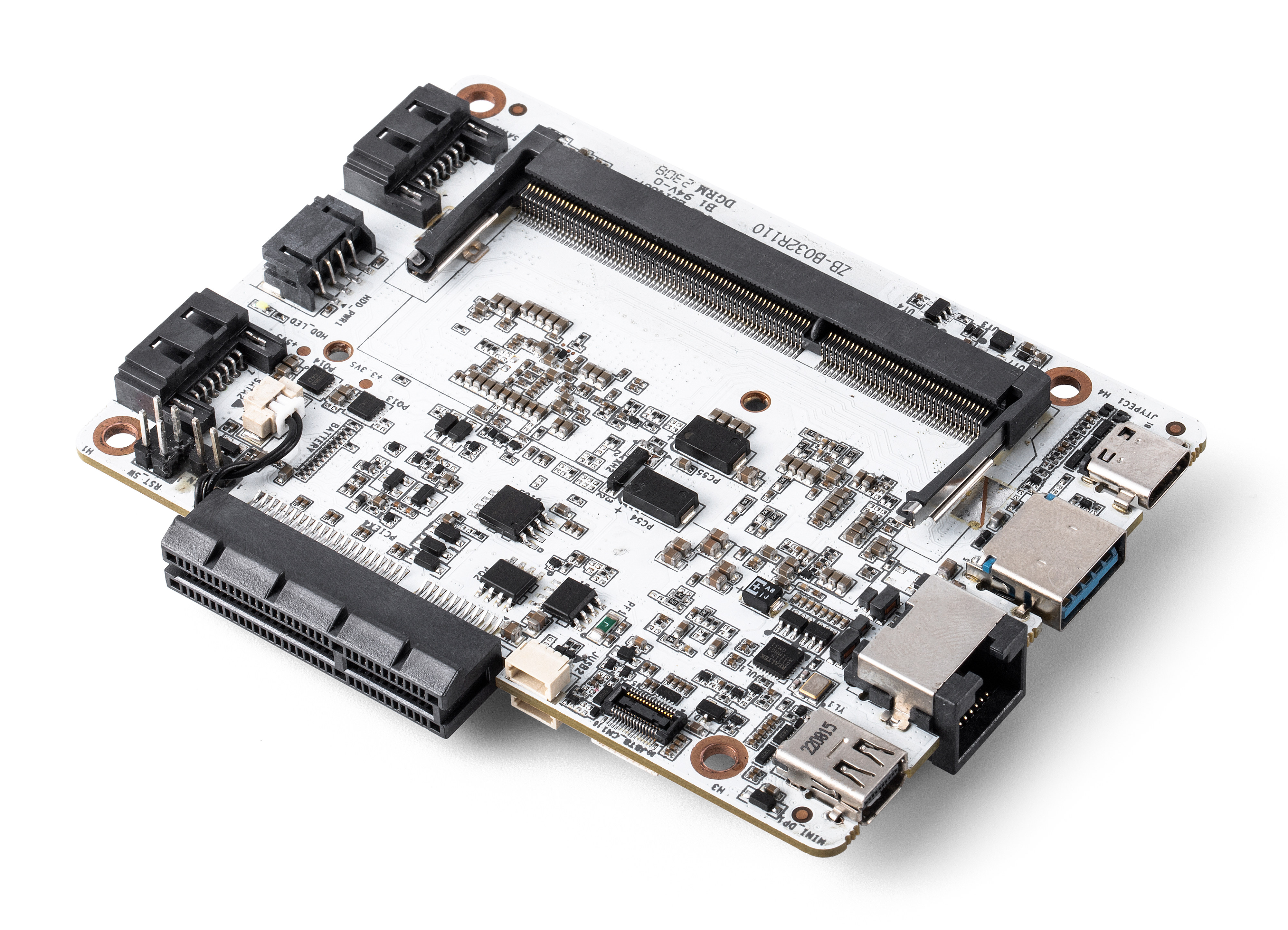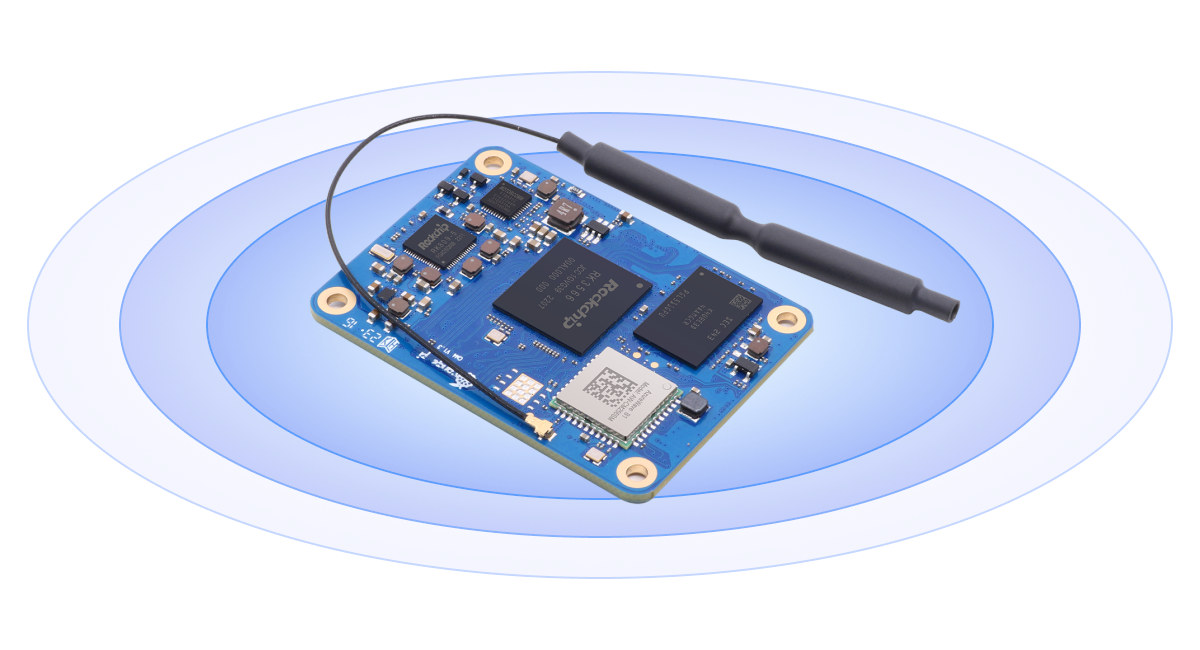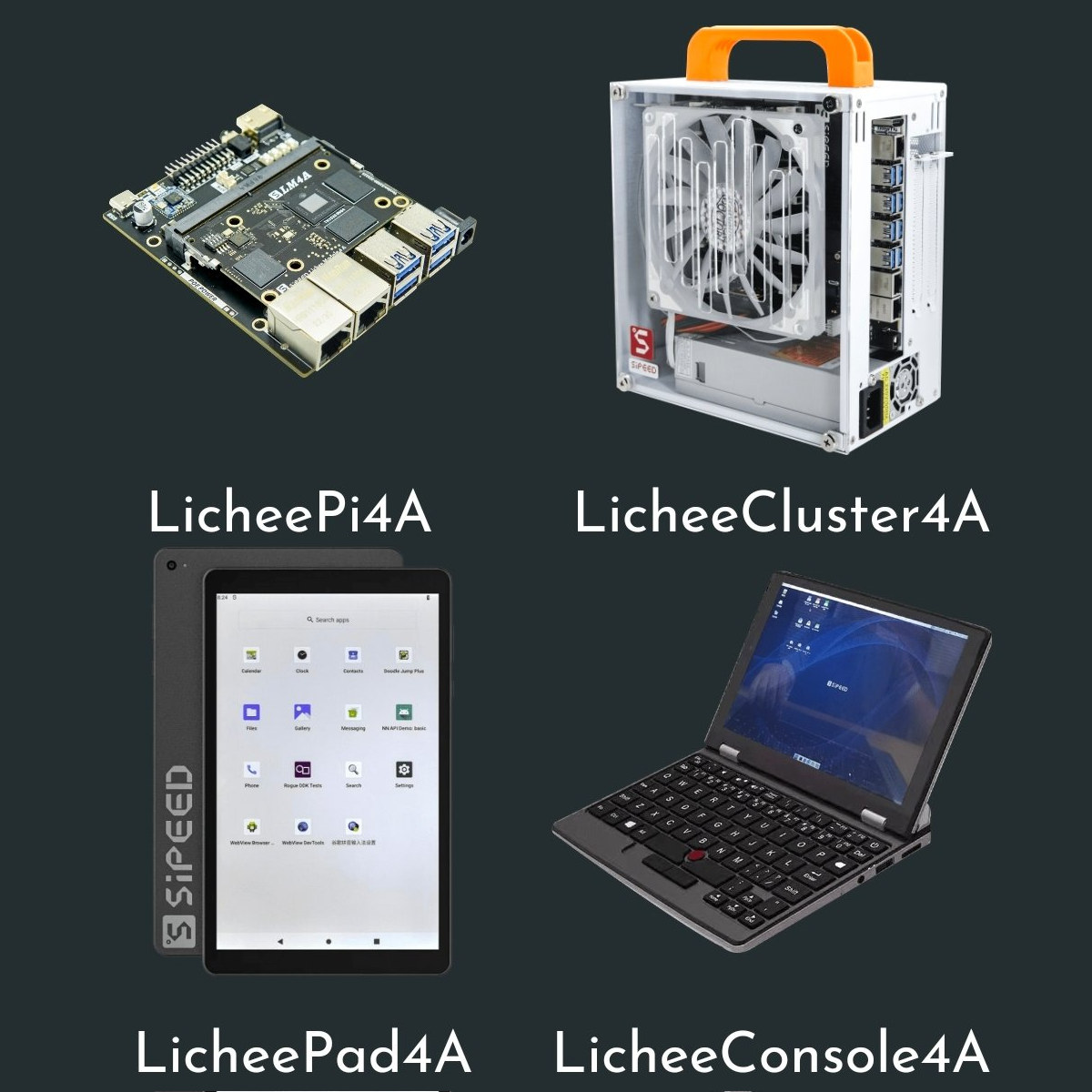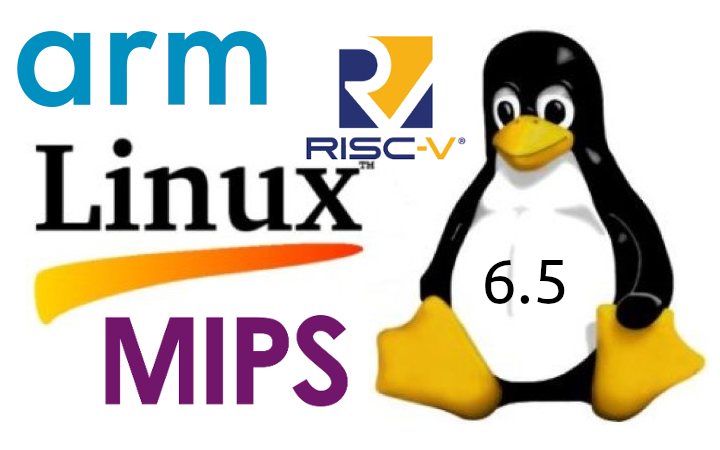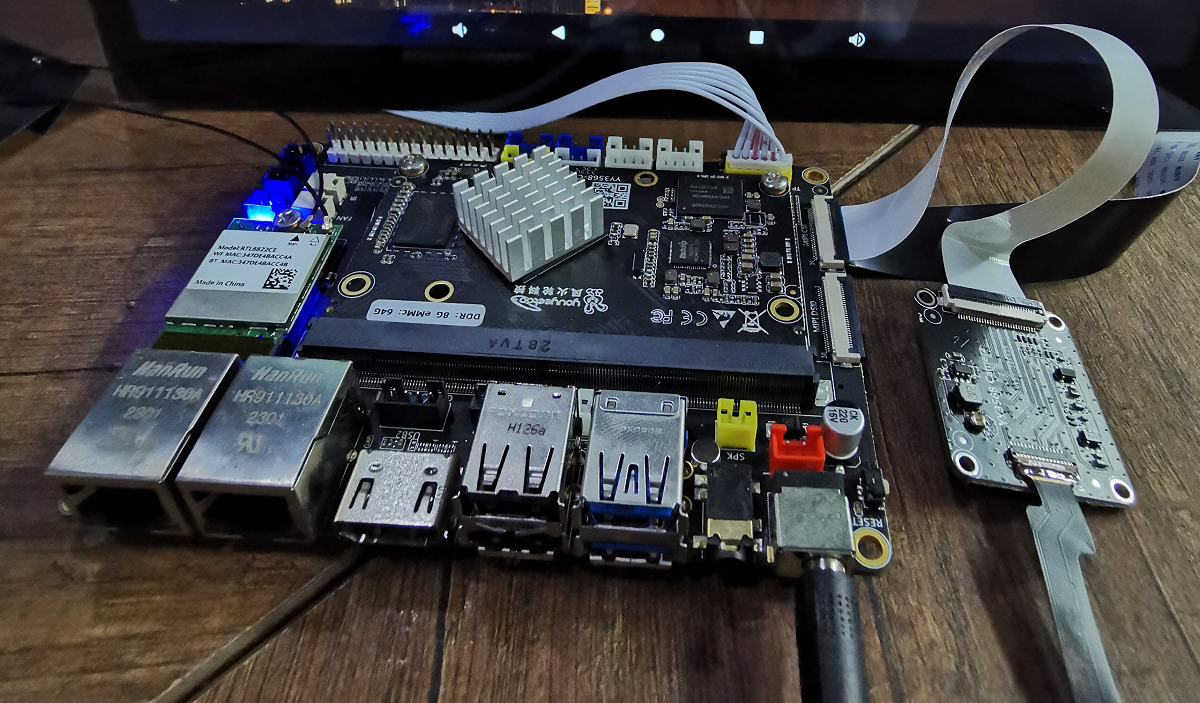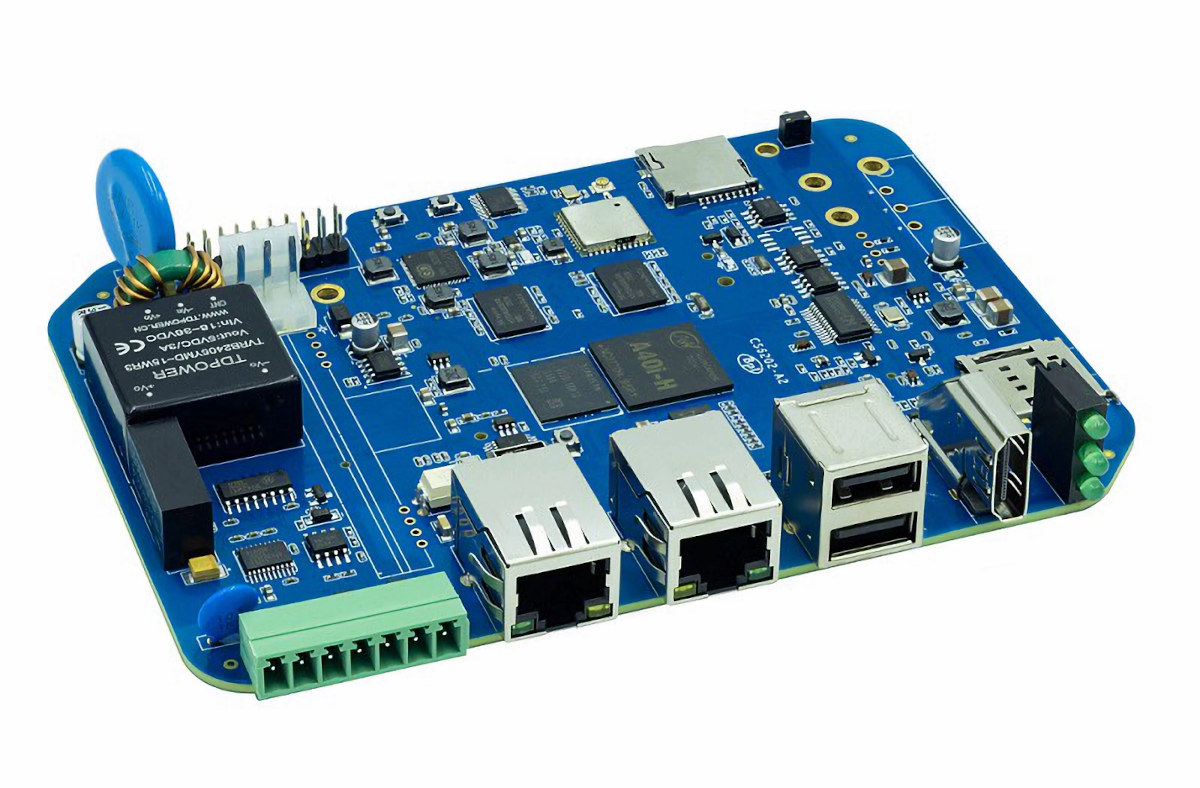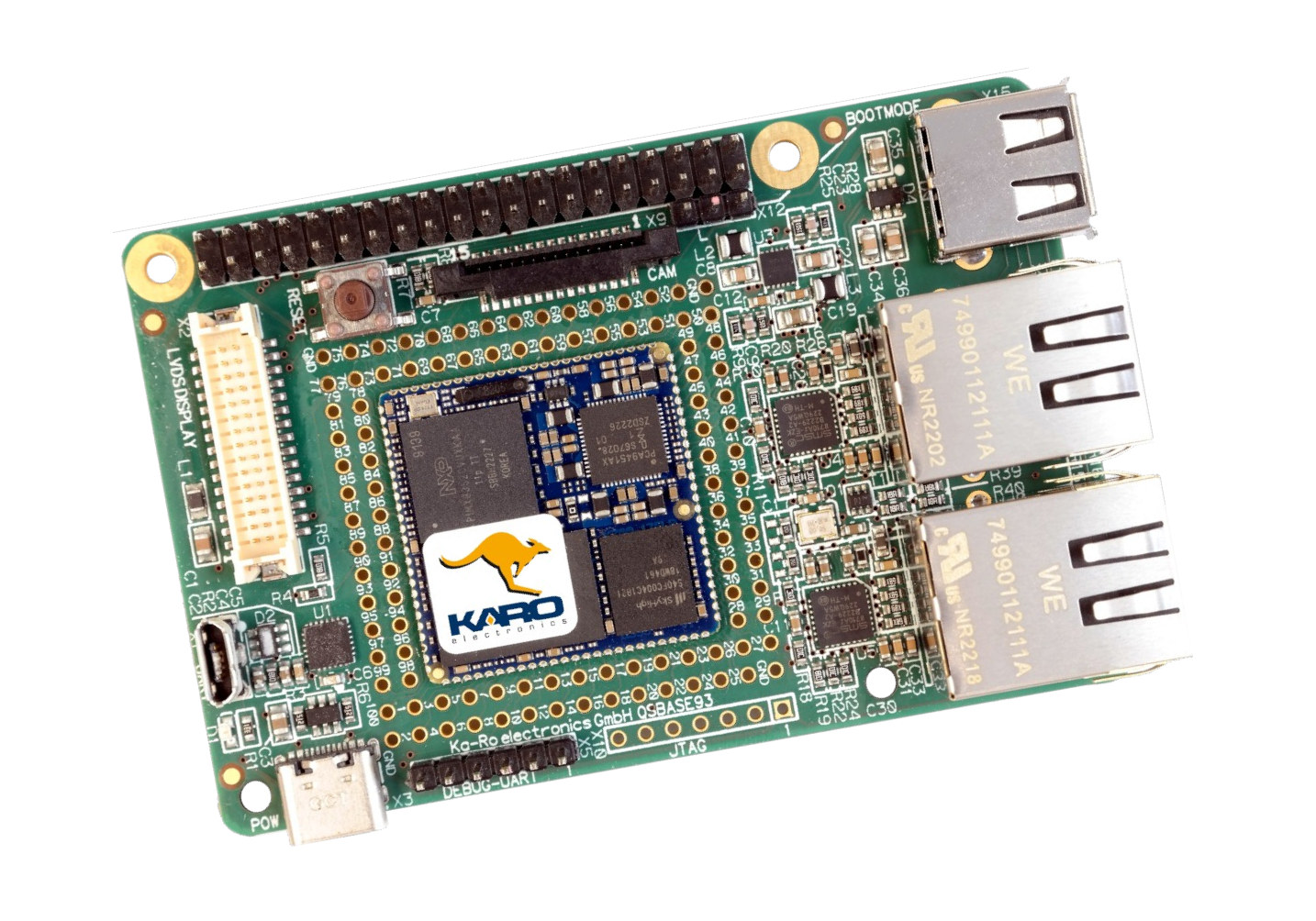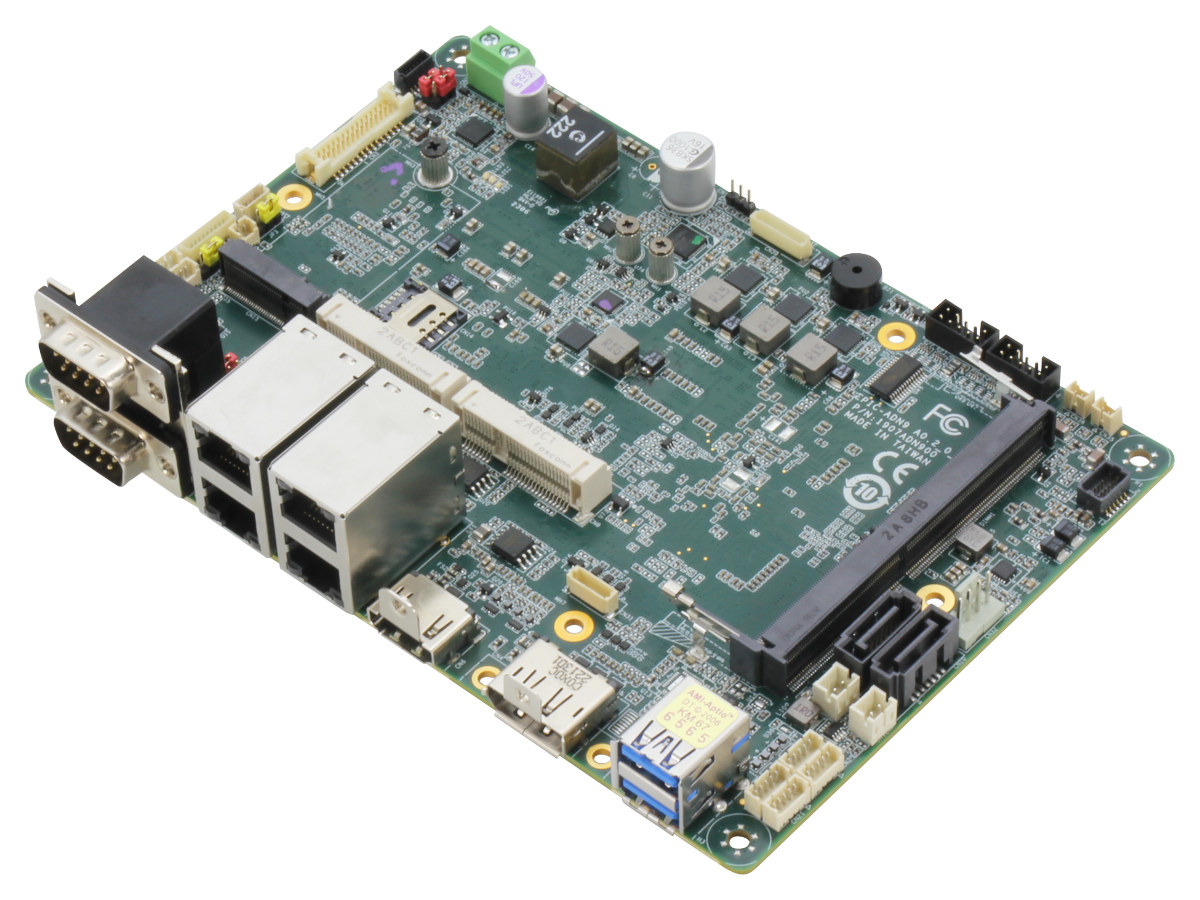ZimaBlade is an inexpensive low-profile board based on an Intel Celeron dual-core or quad-core processor and designed for server applications with a low-profile RJ45 Gigabit Ethernet port, two SATA connectors, and a PCIe slot, but not only as the board also comes with display interfaces such as mini DP and USB-C DisplayPort Alt. mode and a few USB ports. It’s not IceWhale Technology’s first venture into portable server board as the company previously introduced the Zimaboard based on Intel Celeron Apollo Lake processors with many of the same features back in 2021. The new ZimaBlade offers more interfaces as well as a complete enclosure instead of just a large heatsink. ZimaBlade specifications: SoC (one or the other) ZimaBlade 3760 – Intel Celeron dual-core processor up to 2.2 GHz (Turbo) with Intel UHD graphics; 6W TDP ZimaBlade 7700 – Intel Celeron quad-core processor up to 2.4 GHz (Turbo) with Intel UHD […]
Orange Pi Compute Module 4 – A low-cost Rockchip RK3566-powered alternative to Raspberry Pi CM4
Orange Pi Compute Module 4 is a system-on-module mechanically and electrically compatible with the Raspberry Pi CM4, but powered by a Rockchip RK3566 quad-core Arm Cortex-A55 AI processor just like the Radxa CM3 introduced a few years ago, or more recently the Banana Pi BPI-CM2 (RK3568). The new module, also called Orange Pi CM4 for shorts, comes with 1GB to 8GB RAM, 8GB to 128GB eMMC flash, and an optional 128/256MBit SPI flash, as well as a Gigabit Ethernet PHY and on-board WiFi 5 and Bluetooth 5.0. It comes with the two 100-pin high-density connectors found on the Raspberry Pi CM4, and a smaller 24-pin connector for extra I/Os. Orange Pi Compute Module 4 specifications: SoC – Rockchip RK3566 quad-core Arm Cortex-A55 processor @ 1.8 GHz with Arm Mali-G52 2EE GPU, 0.8 TOPS AI accelerator, 4Kp60 H.265/H.264/VP9 video decoding, 1080p100f H.265/H.264 video encoding System Memory – 1GB, 2GB, 4GB, or […]
Sipeed unveils RISC-V tablet, portable Linux console, and cluster
Sipeed has unveiled three new hardware platforms based on the LM4A RISC-V system-on-module found in their LicheePi 4A SBC, namely the Lichee Cluster 4A cluster for native RISC-V compilation, the Lichee Pad 4A 10.1-inch tablet running Android 13 or Debian, and the Lichee Console 4A a portable Linux console with a small 7-inch display and a built-in keyboard. As a quick reminder, the Sipeed LM4A SoM is based on the Alibaba T-Head TH1520 quad-core RISC-V processor @ 1.8 to 2.5 GHz that has just gotten some support in Linux 6.5, comes with up to 16GB RAM and up to 64 GB eMMC flash, integrates two Gigabit Ethernet PHY, and exposes all I/Os through a 260-pin SO-DIMM connector. We’ve previously noticed the TH1520 module delivers performance similar to the Raspberry Pi Compute Module 4 and even more when using a customized toolchain. Lichee Cluster 4A All new Sipeed hardware platforms feature […]
Linux 6.5 release – Notable changes, Arm, RISC-V and MIPS architectures
Linus Torvalds has just announced the release of Linux 6.5 on the Linux Kernel Mailing List (LKML): So nothing particularly odd or scary happened this last week, so there is no excuse to delay the 6.5 release. I still have this nagging feeling that a lot of people are on vacation and that things have been quiet partly due to that. But this release has been going smoothly, so that’s probably just me being paranoid. The biggest patches this last week were literally just to our selftests. The shortlog below is obviously not the 6.5 release log, it’s purely just the last week since rc7. Anyway, this obviously means that the merge window for 6.6 starts tomorrow. I already have ~20 pull requests pending and ready to go, but before we start the next merge frenzy, please give this final release one last round of testing, ok? Linus The earlier […]
Youyeetoo YY3568 devkit review – Part 1: Unboxing, specifications, and Android 11 testing
Youyeetoo has sent us a review sample of their YY3568 “Bundle 5” devkit with the Rockchip RK3568-powered YY3568 SBC, an 11.6-inch touchscreen display, a MIPI camera module, and all accessories required to get started. We were especially interested in using it to play with the 1 TOPS NPU in the Rockchip RK3568 in Linux, but we’ll start the Youyeetoo YY3568 review with an unboxing, some specifications, and a quick review with Android 11 before switching to Debian 10 in the second part of the review. Youyeetoo YY3568 devkit unboxing The YY3568 single board computer itself is comprised of a carrier board and a YY3568-Core board with a Rockchip RK3568 processor, as well as 8GB RAM, 64GB eMMC flash, and WiFi 5 and Bluetooth 5.0 module. The board is suitable for various applications from generic computing to video playback and AI workloads. YY3568 SBC specifications and hardware overview Youyeetoo YY3568 board […]
Banana Pi BPI-6202 industrial SBC features Allwinner A40i SoC, 24V DC input, RS485 interfaces
Banana Pi BPI-6202 “embedded single board computer” features the industrial-grade Allwinner A40i quad-core Cortex-A7 processor with industrial temperature range and long life cycle, 2GB DDR3, 8GB eMMC flash, M.2 SATA slot, and more. That’s the second Allwinner A40i board from Banana Pi since the company launched the Banana Pi BPI-M2 Ultra SBC last year, but the new embedded SBC looks to be better suited for industrial applications with features such as dual Ethernet, an RS485 + RS232 terminal block, 24V DC input, and a -40 to +60°C operating temperature range. Banana Pi BPI-6202 specifications: SoC – Allwinner A40i quad-core Arm Cortex-A7 processor @ 1.20 GHz with Arm Mali-400MP2 GPU, 1080p60 H.264, MPEG-4, MPEG-1/2 video decoder, H.264 1080p45 video encoder System Memory – 2GB DDR3 SDRAM Storage – 8GB eMMC flash, microSD card slot, M.2 Key-B 2242 socket for SATA SSD Video & audio output – HDMI 1.4 port up to […]
Tiny solder-down NXP i.MX 93 System-on-Module powers credit card-sized evaluation board
Ka-Ro Electronics’ QS93 is a tiny solder-down NXP i.MX 93 System-on-Module (SoM) running Linux and designed for edge processing. The company also offers a credit card-sized evaluation board that may remind some of the Raspberry Pi with its GPIO header and general layout, but it comes with two Fast Ethernet ports and one USB 2.0 port. We’ve already covered several system-on-modules based on the NXP i.MX 93 Cortex-A55/M33 AI processor including some with high-density board-to-board connectors such as the Compulab UCM-IMX93 and Forlinx FET-MX9352-C, others with a SO-DIMM connector like the VAR-SOM-MX93, and finally some designed to be soldered on the carrier board such as the OSM-L compatible iW-RainboW-G50M, and the QS93 adds to the latter category in a tiny 27×27 mm form factor. Ka-Ro electronics QS93 specifications: SoC – NXP i.MX 93 with CPU – Up to dual-core Cortex-A55 processor @ up to 1.5 GHz Real-time core – Arm […]
EPIC-ADN9 SBC features up to four 2.5GbE interfaces, two SATA ports
AAEON EPIC-ADN9 SBC is powered by an Intel Processor N50/N97, Core i3-N305, or Atom x7425E Alder Lake N-series processor and equipped with up to four 2.5GbE networking ports and two SATA III ports for storage. The board also comes with a SO-DIMM slot taking up to 16GB DDR4 memory, mSATA storage, three display interfaces including HDMI and DisplayPort, and two USB 3.2 Gen 2 ports, and offers expansion capabilities via M.2 and mPCIe sockets as well as headers. AAEON EPIC-ADN9 specifications: Alder Lake-N SoC (one or the other) Intel Core i3-N305 octa-core processor @ 1.8 / 3.8 GHz (Turbo) with 6 MB cache, 32 EU Intel UHD Graphics up to 1.25 GHz; TDP: 15W Intel Atom x7425E quad-core processor @ 1.5 / 3.4 GHz (Turbo) with 6 MB cache, 24 EU Intel UHD Graphics up to 1.00 GHz; TDP: 12W Intel Processor N97 quad-core processor @ 2.0 / 3.6 GHz […]


